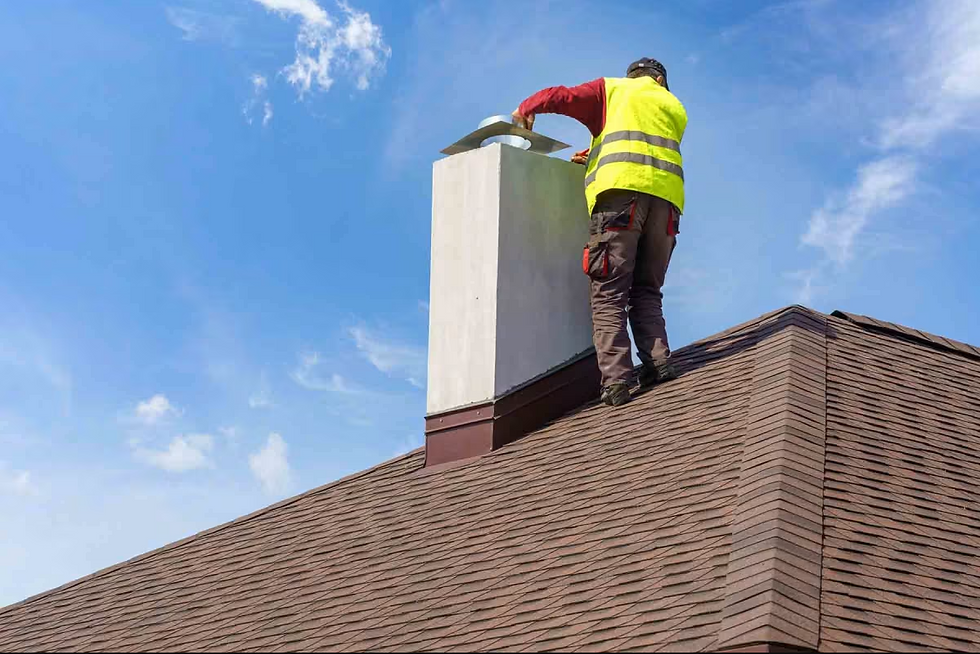How Long Does an HVAC Inspection Take? A Complete Breakdown
- Growth Pro
- 12 minutes ago
- 4 min read
When homeowners or building managers schedule routine HVAC maintenance, one of the most common questions is: How long does an HVAC inspection take?
The answer depends on how detailed the inspection is, what components are checked, and the size of the HVAC system. Using information from a professional HVAC long-form inspection checklist, this guide explains everything that goes into a thorough HVAC evaluation.

How Long Does an HVAC Inspection Take? (Typical Time Range)
A standard HVAC inspection usually takes 1 to 2 hours for a typical residential home. However, a full, detailed, commercial-style inspection like the long-form checklist in your PDF can take 2 to 4 hours or more, depending on:
Number of HVAC units
Building size
Accessibility of components
Indoor air quality issues
Whether the system includes extras like humidifiers, VAV boxes, or energy-management controls
What Happens During an HVAC Inspection?
A long-form HVAC inspection is far more thorough than standard tune-ups. It covers every major component of the heating, cooling, and ventilation system, ensuring safe operation, proper airflow, indoor air quality, and energy efficiency. Based on the long-form HVAC checklist in your PDF, here’s a broadened explanation of what technicians typically evaluate and why each step matters.
1. Outside Air Intake & Dampers
Technicians begin by inspecting all outside air intakes to ensure the building is receiving fresh, clean air. This includes checking for:
Blockages such as debris, leaves, or bird nests
Nearby odor sources (parking lots, trash areas, busy roads)
Proper damper operation and sealing
Unrestricted bird screens and adequate mesh sizing
Obstructions that could reduce airflow
These steps help confirm that the HVAC system supplies clean air and meets ventilation standards, which is essential for indoor air quality and building safety.
2. Mixing Plenum & Outdoor Air Quantity
The mixing plenum is where outdoor and return air blend before being conditioned. Technicians check:
Cleanliness of the plenum chamber
Proper pressure conditions to ensure outdoor air enters correctly
Whether dampers open/close smoothly
Outdoor air measurement levels compared to ASHRAE recommendations
Because airflow accuracy is critical for ventilation and comfort, these checks can require multiple readings and adjustments.
3. Filters & Humidification System
Air filters and humidifiers significantly influence system performance and indoor air quality. During the inspection, the technician evaluates:
Whether filters fit properly and prevent air bypass
Filter pressure drop to confirm adequate airflow
Visible dust, debris, or contaminant buildup
Humidifier type, nozzle performance, water drainage, and pan cleanliness
Signs of microbial growth or mineral deposits
Humidifiers take extra time to inspect because they involve water, drainage, and sanitation concerns.
4. Cooling Coils & Heating Coils
Next, the technician inspects both cooling and heating coils. This part of the inspection includes:
Assessing coil cleanliness and accessibility
Checking surface temperatures
Identifying condensation or water-carryover issues
Ensuring no airflow blockages or corrosion
Dirty or obstructed coils reduce efficiency and drive up energy costs, so verifying their condition is essential.
5. Condensate Drain & Drain Pans
A critical area of the inspection involves checking the condensate system, including:
Cleanliness and accessibility of drain pans
Standing water, leaks, or clogs
Trap function and proper drainage
Signs of mold, slime, or foul odors
An improperly maintained condensate system can lead to water damage or microbial growth, making this a high-priority inspection point.
6. Supply Fan Chambers & Fans
Supply fans are responsible for distributing conditioned air throughout the building. During the inspection, technicians evaluate:
Fan blade cleanliness and wear
Belt condition, alignment, and tension
Vibration levels and unusual noises
Air leaks, chamber cleanliness, and door seals
Correct operation of fan controls
Mechanical checks like these take time but are essential for reliable airflow and energy efficiency.
7. Ductwork & Air Distribution
Ductwork is inspected to ensure air is distributed evenly. This includes:
Checking for leaks, loose connections, or unsealed joints
Examining fire dampers and access doors
Identifying areas of poor airflow or short-circuiting between diffusers
Looking for dust buildup, mold, or moisture inside ducts
Large buildings or systems with many branches require more time to evaluate thoroughly.
8. Thermostats, Humidity Controls & Sensors
Accurate temperature and humidity readings are essential for comfort and energy management. During this part of the inspection, the technician checks:
Thermostat placement to avoid false readings
Correct setpoints for both heating and cooling seasons
Calibration of humidity sensors and thermostats
Actual room temperature and humidity levels
Even small calibration issues can affect comfort and energy usage.
9. Return Air System & Exhaust Systems
The return air system plays a major role in maintaining pressure balance and indoor air quality. Technicians look at:
Return grilles and pathways for obstructions
Airflow volume and pressure differences
Condition of return air chambers and ceiling plenums
Exhaust fan operation, especially for restrooms and specialized rooms
Adequacy of make-up air to support exhaust ventilation
These checks help ensure stale air is removed and fresh air is properly circulated.
10. Mechanical Rooms, Boilers, Chillers & Cooling Towers
The final part of the inspection focuses on mechanical equipment and is often the most detailed. Technicians check:
Pneumatic and electric control systems
Refrigerant leaks and purge cycles
Boiler flues, gaskets, fuel lines, and purge cycles
Cooling tower cleanliness, algae growth, eliminators, and biocide treatment
Overall condition of mechanical rooms
Since these systems contain many interconnected components, this section of the inspection can take the longest.

.png)



Comments